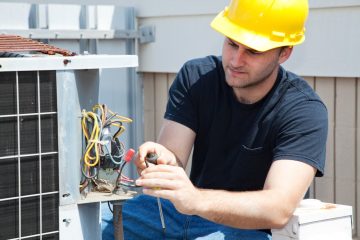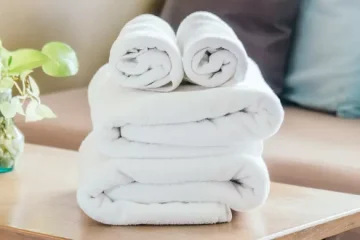Choosing the right exterior cladding for your home is crucial for both aesthetics and functionality. With the myriad of options available, it can be challenging to decide which material best suits your needs. Two popular choices among homeowners are vinyl cladding and weatherboard. Each offers unique benefits and drawbacks that can significantly impact the look, durability, and maintenance requirements of your home’s exterior. In this article, we will compare vinyl cladding vs. weatherboard, providing a detailed analysis to help you make an informed decision based on your specific preferences, budget, and style requirements.
Material Composition and Durability
Understanding the composition and durability of cladding materials is essential in making an informed choice for your home’s exterior. Vinyl cladding is manufactured from polyvinyl chloride (PVC), a type of plastic renowned for its resilience and minimal maintenance needs. This synthetic material is designed to withstand harsh weather conditions, resist moisture, and prevent issues such as rot or insect damage. Consequently, vinyl cladding can offer homeowners a long-lasting, worry-free exterior solution.
On the other hand, weatherboard cladding is typically crafted from timber or composite materials. Timber weatherboards, made from hardwood or softwood, provide a natural and timeless appearance that many homeowners find appealing. Composite weatherboards combine wood fibers with resin, offering enhanced durability and resistance to environmental elements. While timber weatherboards can be prone to issues such as warping, cracking, or termite infestation, regular maintenance can help mitigate these problems and extend the lifespan of the cladding.
In comparing vinyl cladding vs. weatherboard, it becomes clear that both materials offer distinct advantages. Vinyl cladding excels in durability and low maintenance, making it an attractive option for those seeking a long-lasting solution with minimal upkeep. Weatherboard, with its natural aesthetic and traditional appeal, offers a more classic look but requires regular maintenance to preserve its beauty and functionality. Understanding these differences is key to choosing the right cladding for your home.
Aesthetic Appeal and Design Flexibility
The aesthetic appeal of your home’s exterior is a significant factor in its overall curb appeal and value. When comparing vinyl cladding vs. weatherboard, it’s important to consider how each material can enhance or complement your home’s architectural style.
Vinyl cladding offers a wide range of colors, styles, and textures, allowing homeowners to customize their home’s appearance easily. From smooth finishes to wood grain patterns, vinyl can mimic the look of traditional materials while providing the benefits of modern technology. This versatility makes it a popular choice for those who want a specific aesthetic without the maintenance associated with natural materials. However, some critics argue that vinyl cladding can sometimes appear less authentic or high-end compared to natural options.
Weatherboard, especially when made from timber, provides a classic, timeless look that exudes natural beauty and charm. The texture and grain of real wood add depth and character to your home’s exterior, creating a warm and inviting atmosphere. Additionally, weatherboard can be painted or stained in virtually any color, offering homeowners significant flexibility in achieving their desired look. Composite weatherboards also offer a variety of finishes and colors while providing improved durability over traditional timber.
While vinyl cladding can replicate many traditional styles and offers extensive design options, weatherboard delivers an unmatched natural appeal that many homeowners find irreplaceable. The choice between vinyl cladding and weatherboard ultimately comes down to your aesthetic preferences and the level of maintenance you are willing to undertake to preserve your home’s exterior beauty.
Installation and Maintenance
When considering exterior cladding options, the ease of installation and maintenance requirements are crucial factors to weigh. In comparing vinyl cladding vs. weatherboard, these aspects can significantly influence your choice.
Vinyl cladding is renowned for its relatively straightforward installation process. Lightweight and often available in interlocking panels, vinyl can be installed quickly and efficiently by professional installers. The simplicity of its installation helps reduce labor costs and minimizes disruption to your home. Moreover, vinyl cladding requires minimal maintenance once installed. It doesn’t need painting, staining, or sealing and only requires occasional cleaning with soap and water to maintain its appearance. This low-maintenance feature is a significant advantage for homeowners seeking a hassle-free solution.
Conversely, weatherboard installation is more labor-intensive and requires a higher level of skill. Timber weatherboards need to be cut, nailed, and fitted precisely, which can be time-consuming and costly. Composite weatherboards are somewhat easier to install but still require careful handling and expertise. In terms of maintenance, weatherboard cladding demands more attention than vinyl. Timber weatherboards must be regularly painted or stained to protect against moisture, rot, and pests. Even composite weatherboards, while more durable, may require periodic maintenance to keep them in good condition.
Vinyl cladding offers an easier and quicker installation process with minimal maintenance requirements, making it an attractive option for those seeking convenience and low upkeep. Weatherboard, though more challenging and costly to install, provides a timeless aesthetic that many homeowners are willing to maintain through regular upkeep. Your decision between vinyl cladding and weatherboard should consider your willingness to invest time and resources into the installation and maintenance of your home’s exterior.
Cost Considerations
Budget is a key factor in any home improvement project, and understanding the cost implications of vinyl cladding vs. weatherboard is essential for making an informed decision.
Vinyl cladding is generally more affordable than weatherboard, both in terms of initial purchase and long-term maintenance. The material itself is cost-effective, and its ease of installation reduces labor costs, making it a popular choice for budget-conscious homeowners. Additionally, the low maintenance requirements of vinyl cladding translate to lower ongoing costs. There is no need for regular painting, staining, or sealing, which can save you a significant amount of money over the years.
On the other hand, weatherboard, particularly timber weatherboard, tends to be more expensive upfront. The cost of high-quality timber and the more labor-intensive installation process contribute to higher initial expenses. Composite weatherboards are often priced between vinyl and timber, offering a middle-ground option. However, the ongoing maintenance costs for weatherboard can add up over time. Regular painting or staining, along with potential repairs for rot or pest damage, must be factored into the long-term budget.
While vinyl cladding provides a cost-effective solution with minimal upkeep, weatherboard offers a premium look that can enhance your home’s value and curb appeal. However, the higher initial and maintenance costs of weatherboard must be considered. Ultimately, your choice between vinyl cladding and weatherboard will depend on your budget, your willingness to invest in maintenance, and your aesthetic preferences.
Environmental Impact
In today’s world, sustainability and environmental impact are increasingly important considerations for homeowners when choosing building materials. When comparing vinyl cladding vs. weatherboard, it’s crucial to understand how each material affects the environment.
Vinyl cladding, being a plastic product, has raised concerns regarding its environmental footprint. The production of polyvinyl chloride (PVC) involves significant energy consumption and the release of harmful chemicals. Additionally, vinyl is not biodegradable, and its disposal can contribute to long-term environmental pollution. However, advancements in recycling technology have made it possible to recycle PVC, which can mitigate some of its environmental impact.
Weatherboard, particularly when made from sustainably sourced timber, offers a more eco-friendly option. Timber is a renewable resource, and responsible forestry practices ensure that it is harvested in an environmentally sustainable manner. Moreover, timber weatherboards are biodegradable and have a smaller carbon footprint during production compared to vinyl. Composite weatherboards, made from a blend of wood fibers and resins, also offer environmental benefits by utilizing recycled materials and reducing waste.
Choosing weatherboard from certified sustainable sources can significantly reduce its environmental impact, making it a greener choice for eco-conscious homeowners. Composite weatherboards provide a balance between sustainability and durability, often incorporating recycled materials in their production.
Ultimately, the environmental impact of your cladding choice will depend on the materials used and the sustainability practices of the manufacturers. Vinyl cladding offers durability and low maintenance but has a higher environmental footprint, while weatherboard, especially when sustainably sourced, provides a more eco-friendly solution. Weighing these factors will help you make a choice that aligns with your environmental values and sustainability goals.
Conclusion
When it comes to choosing between vinyl cladding and weatherboard, both options offer distinct advantages and considerations. Vinyl cladding stands out for its affordability, low maintenance, and ease of installation, making it a practical choice for homeowners looking for a durable and cost-effective solution. However, its environmental impact and aesthetic limitations might be a drawback for some.
On the other hand, weatherboard provides a timeless, natural beauty and design flexibility that many homeowners find appealing. Although it requires more maintenance and comes with higher initial and long-term costs, the environmental benefits of sustainably sourced timber or composite materials make it a compelling option for those prioritizing sustainability and a premium look.
Ultimately, your decision will depend on your specific needs, budget, and aesthetic preferences. By considering the material composition, durability, installation and maintenance requirements, cost, and environmental impact, you can make an informed choice that enhances the beauty and functionality of your home for years to come.



